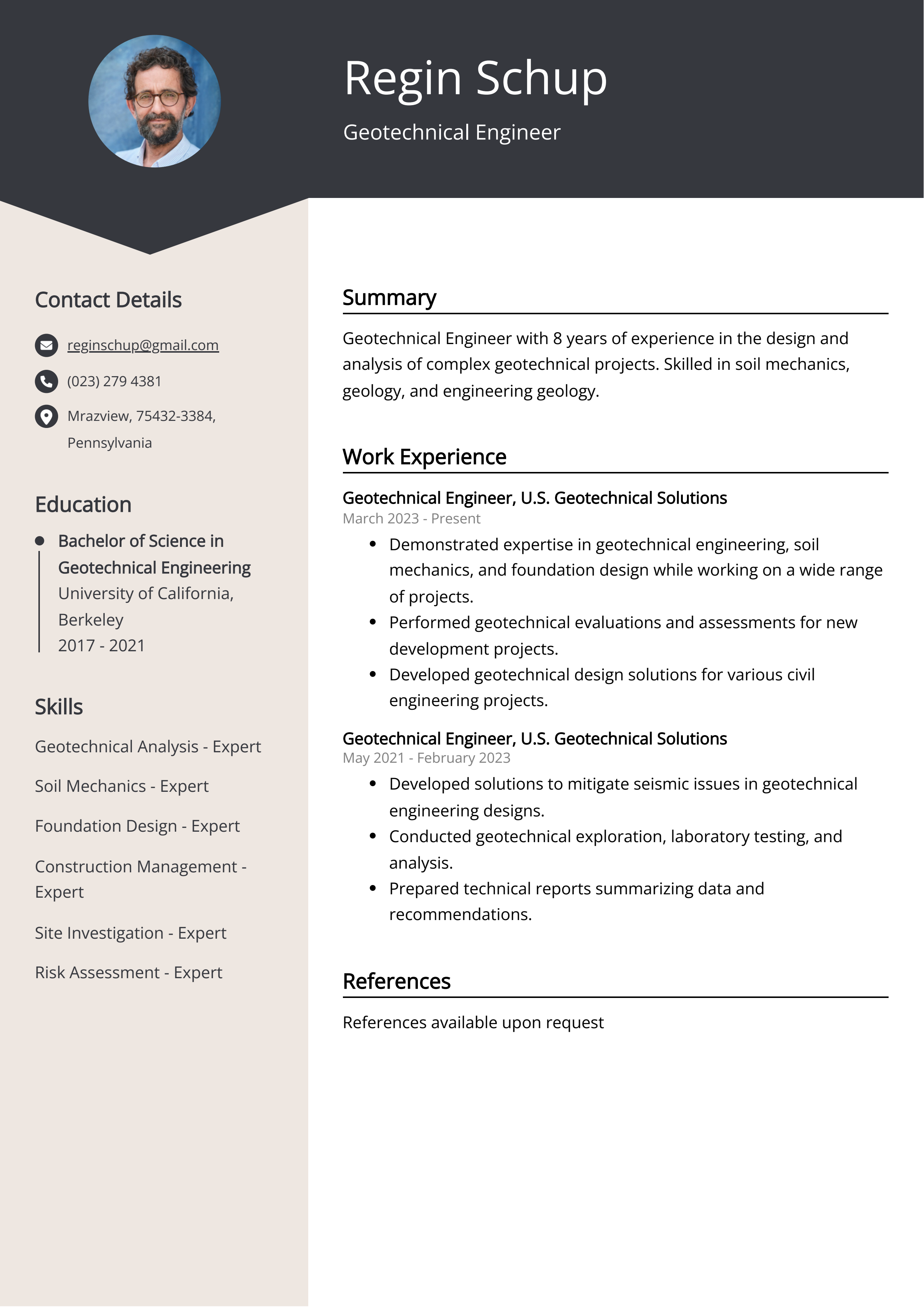The Greatest Guide To Geotheta
The Greatest Guide To Geotheta
Blog Article
Geotheta Fundamentals Explained
Table of ContentsGeotheta - The FactsAbout GeothetaThe Facts About Geotheta RevealedThe Facts About Geotheta RevealedThe Ultimate Guide To Geotheta

They carry out site investigations, accumulate examples, execute laboratory tests, and examine data to examine the viability of the ground for building and construction tasks - Engineer of Record. Based upon their findings, geotechnical engineers offer suggestions for structure layout, incline security, retaining structures, and mitigation of geotechnical threats. They team up with various other specialists, such as engineers, architectural engineers, and construction teams, to make certain that geotechnical considerations are integrated into the general project style and implementation
By analyzing the habits and buildings of soil and rock, they can recognize potential geotechnical risks such as landslides, soil negotiation, or slope instability. Their expertise helps protect against failures or crashes that might jeopardize lives and property. Right here are some in-depth responsibilities and responsibilities of a geotechnical engineer: Website Examination: Geotechnical engineers conduct site examinations to collect data on subsurface problems.
They interpret the data to recognize the buildings and behavior of the dirt and rock, including their toughness, leaks in the structure, compaction qualities, and groundwater conditions. Geotechnical Analysis and Design: Geotechnical engineers examine the data gathered throughout site examinations to analyze the security and viability of the website for building jobs. They do geotechnical calculations and modeling to review aspects such as bearing capacity, settlement, incline security, side earth stress, and groundwater flow.
Geotheta Fundamentals Explained
Structure Style: Geotechnical engineers play a critical role in creating foundations that can securely support the designated structure. They analyze the soil conditions and load needs to identify the appropriate foundation type, such as shallow foundations (e.g., grounds), deep foundations (e.g (https://my-store-fc66c1.creator-spring.com/)., heaps), or specialized strategies like dirt improvement. They take into consideration aspects such as settlement restrictions, birthing ability, and soil-structure interaction to establish optimum structure styles
They evaluate construction plans, display site activities, and conduct field assessments to verify that the design recommendations are complied with. If unanticipated geotechnical concerns develop, they analyze the scenario and supply referrals for removal or modifications to the layout. Risk Evaluation and Reduction: Geotechnical designers assess geotechnical hazards and threats related to the project website, such as landslides, liquefaction, or soil erosion.

Collaboration and Communication: Geotechnical designers work very closely with other experts entailed in a job, such as engineers, structural designers, and building and construction groups. Reliable interaction and cooperation are important to integrate geotechnical factors to consider into the total project design and construction procedure. Geotechnical engineers give technological experience, response questions, and ensure that geotechnical needs are satisfied.
How Geotheta can Save You Time, Stress, and Money.
Right here are some kinds of geotechnical designers: Foundation Designer: Structure designers focus on designing and examining foundations for structures. They assess the dirt problems, load requirements, and website qualities to figure out one of the most suitable structure kind and style, such as superficial structures, deep foundations, or specialized strategies like stack foundations.
They examine the aspects influencing slope security, such as soil properties, groundwater conditions, and incline geometry, and create strategies to prevent slope failures and reduce dangers. Quake Engineer: Earthquake engineers specialize in examining and developing frameworks to withstand seismic pressures. They examine the seismic hazard of a website, examine soil liquefaction potential, and establish seismic layout requirements to make sure the safety and security and strength of frameworks throughout earthquakes.
They carry out field screening, gather examples, and analyze the gathered information to define the soil residential or commercial properties, geologic developments, and groundwater conditions at a site. Geotechnical Instrumentation Engineer: Geotechnical instrumentation engineers focus on surveillance and determining the behavior of soil, rock, and frameworks. They mount and preserve instrumentation systems that keep an eye on elements such as soil settlement, groundwater levels, slope motions, and structural displacements to evaluate performance and provide very early cautions of potential concerns.
Geotheta for Dummies
They perform examinations such as triaxial tests, combination tests, straight shear examinations, and leaks in the structure tests to gather information for geotechnical evaluation and design. Geosynthetics Designer: Geosynthetics engineers concentrate on the layout and application of geosynthetic materials, such as geotextiles, geogrids, and geomembranes. They make use of these materials to boost soil stability, strengthen slopes, provide drainage solutions, and control disintegration.
They tend to be investigatory individuals, which means they're intellectual, introspective, and inquisitive. They wonder, methodical, sensible, logical, and rational. Several of them are also social, suggesting they're kind, generous, cooperative, individual, caring, handy, understanding, skillful, and friendly. Does this sound like you? Take our free career test to discover if geotechnical engineer is just one of your leading profession suits.
In the office atmosphere, geotechnical engineers use specialized software tools to execute computations, develop styles, and analyze data. They prepare records, testimonial task requirements, communicate with customers and employee, and coordinate job activities. The office setting gives a conducive atmosphere for research, evaluation, and partnership with various other professionals associated with the project.
3 Simple Techniques For Geotheta
They often check out task sites to carry out site investigations, analyze geotechnical conditions, and gather data for evaluation. These sees involve traveling to different places, often in remote or difficult terrains. Geotechnical engineers might do dirt sampling, conduct examinations, and screen building and construction tasks to guarantee that the geotechnical elements of the task are being applied properly.
Geotechnical designers also operate in specialized geotechnical labs. In these facilities, they carry out experiments, perform tests on dirt and rock samples, and assess the engineering residential properties of the products. Geotechnical research laboratory engineers work extensively in these atmospheres, handling screening tools, operating instruments, and recording information. They team up with other research laboratory staff to make certain accurate and trusted screening outcomes.
Report this page